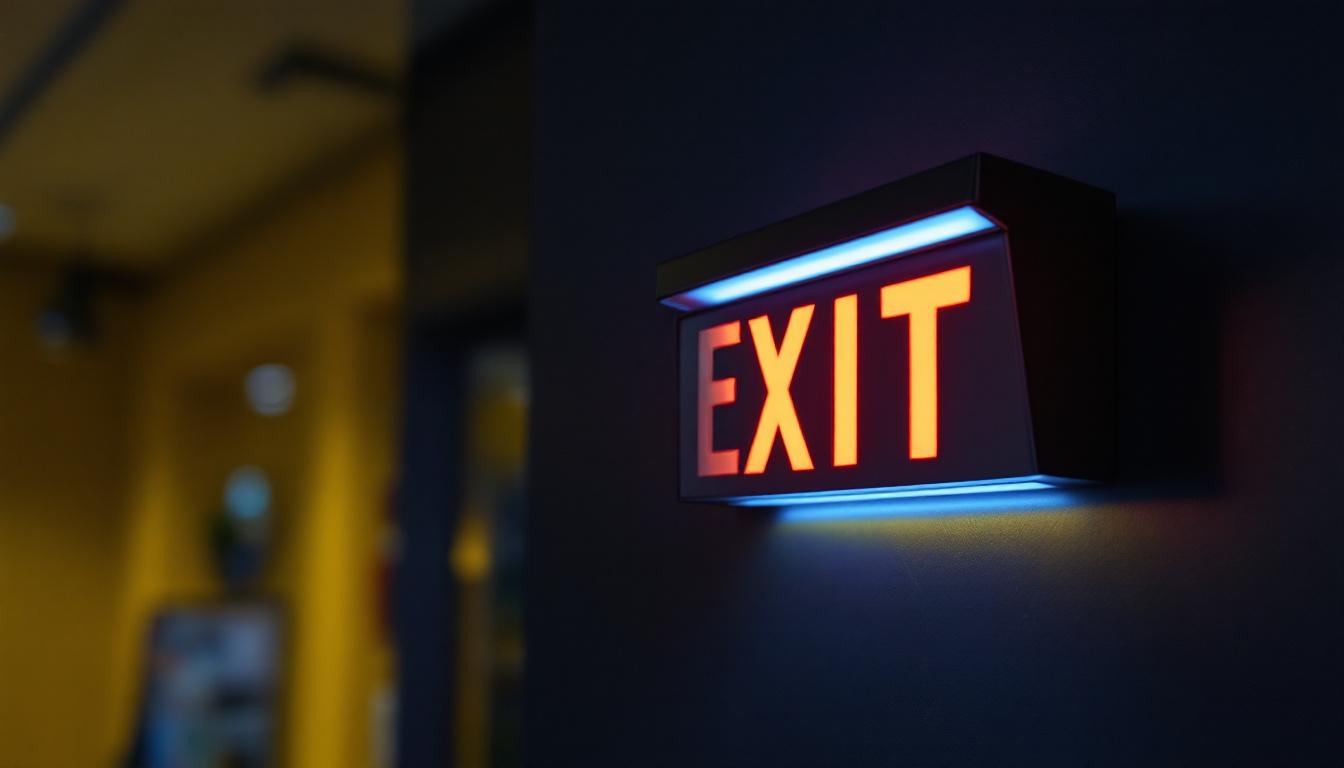
Emergency lighting and exit signage have long been critical components in building safety. However, the trend toward combining these two functions into a single, integrated unit is gaining significant traction. For lighting contractors, understanding this shift is essential—not just for compliance but for delivering smarter, more efficient solutions to clients.
Integrated emergency lights with exit signs reduce installation complexity and maintenance costs. Instead of managing separate fixtures, contractors can streamline wiring and mounting, saving time on job sites. This efficiency appeals to building owners who want reliable safety features without the hassle of multiple systems.
Additionally, integrated units often come with advanced features such as LED illumination, self-testing capabilities, and longer battery life. These enhancements improve safety outcomes and reduce the frequency of manual inspections, which can be a selling point for clients focused on minimizing operational disruptions.
Moreover, the aesthetic appeal of integrated emergency lighting solutions cannot be overlooked. Many modern designs blend seamlessly with contemporary architecture, allowing for a cohesive look throughout the building. This is particularly important in commercial spaces where branding and customer experience are paramount. By opting for stylish integrated units, building owners can ensure that safety measures do not detract from the overall ambiance of their establishments.
Furthermore, the push for sustainability in building practices is driving the adoption of energy-efficient emergency lighting solutions. Integrated units often utilize low-energy LED technology, which not only reduces electricity costs but also aligns with green building certifications. As more organizations strive to meet environmental standards, the demand for energy-efficient emergency lighting will likely continue to rise, making it a critical consideration for contractors and clients alike.
LEDs have revolutionized emergency lighting and exit signs. Their energy efficiency, longevity, and brightness make them the preferred choice over traditional incandescent or fluorescent bulbs. For lighting contractors, specifying LED-based emergency exit lights means fewer replacements and lower energy costs for clients.
One notable advantage is the consistent illumination LEDs provide, which is crucial during emergencies when visibility can save lives. Many newer models offer adjustable brightness settings and wide-angle light distribution, ensuring exit routes are clearly visible from various vantage points. This adaptability is particularly beneficial in large or complex buildings where the layout may not be straightforward, allowing for a more tailored approach to safety.
Another trend is the use of color-changing LEDs in exit signs. While the standard red or green remains dominant, some facilities opt for dynamic colors to match branding or enhance visibility under different lighting conditions. This customization can differentiate a contractor’s offerings in competitive bids. Moreover, the integration of smart technology into LED systems is becoming increasingly popular. These smart LEDs can be monitored remotely, providing real-time data on their operational status, battery life, and even alerting facility managers to any malfunctions, thus streamlining maintenance and ensuring compliance with safety regulations.
In addition to these advancements, the design of LED exit signs has also evolved. Many manufacturers are now focusing on sleek, modern aesthetics that blend seamlessly with contemporary architecture. This not only enhances the overall look of a building but also encourages compliance with safety measures, as visually appealing signs are more likely to be noticed and utilized. Furthermore, the durability of LEDs means that they can withstand harsher conditions, making them ideal for outdoor applications or areas prone to moisture and dust, further expanding their usability across various environments.
Smart technology is making its way into emergency lighting systems. Integrated emergency lights with exit signs now often include features like remote monitoring, automated self-testing, and real-time status alerts. For contractors, this means installing systems that not only meet code but also provide building managers with actionable data.
Remote monitoring reduces the need for manual inspections, as facility managers can receive alerts when a unit’s battery is low or a bulb fails. This proactive approach minimizes downtime and ensures compliance with safety regulations. Lighting contractors who embrace these smart systems position themselves as forward-thinking partners.
Automation also extends to adaptive lighting controls. Some systems can adjust brightness based on ambient light or occupancy, conserving energy while maintaining safety standards. These intelligent features appeal to clients aiming for green building certifications or energy efficiency incentives.
Moreover, the integration of Internet of Things (IoT) technology allows for seamless communication between emergency lighting systems and other building management systems. This interconnectedness can lead to enhanced safety protocols, where emergency lighting can be programmed to activate in conjunction with fire alarms or security systems, creating a comprehensive response to emergencies. For instance, in the event of a fire alarm, the emergency lights can not only illuminate exit paths but also guide occupants away from danger zones, effectively improving evacuation procedures.
Additionally, the data collected from these smart systems can be invaluable for ongoing maintenance and operational efficiency. By analyzing usage patterns and performance metrics, facility managers can make informed decisions about upgrades or replacements, ultimately extending the lifespan of their emergency lighting systems. This data-driven approach not only enhances safety but also supports long-term cost savings, making smart emergency lighting an attractive investment for any building owner.
Staying current with fire and building codes is non-negotiable for lighting contractors. Emergency lighting and exit signage requirements evolve as safety standards improve. Integrated units must comply with regulations such as those outlined by the National Fire Protection Association (NFPA) and the International Building Code (IBC).
One important update involves the minimum illumination levels and visibility distances for exit signs. Contractors should verify that the products they install meet or exceed these thresholds. Also, emergency lights must provide adequate coverage for egress paths, including stairwells and corridors. It is essential for contractors to familiarize themselves with the specific requirements of their local jurisdiction, as variations can exist based on regional safety concerns or building types. For instance, high-rise buildings may have more stringent requirements due to the increased risk associated with evacuating occupants from upper floors.
Battery backup requirements have tightened in many jurisdictions. Integrated units now often feature longer-lasting lithium-ion batteries instead of traditional nickel-cadmium cells. These batteries provide reliable power during outages and have a longer service life, reducing replacement frequency. Furthermore, contractors should consider the environmental impact of the batteries they choose, as many municipalities are pushing for greener solutions. The shift towards more sustainable products not only aligns with regulatory trends but also appeals to clients who prioritize eco-friendly practices in their projects.
In addition to battery technology, advancements in LED lighting have transformed emergency lighting systems. LEDs offer superior energy efficiency and longevity compared to traditional incandescent bulbs, which translates to lower operational costs and reduced maintenance efforts over time. Contractors should stay informed about the latest LED technologies, including smart lighting systems that can adapt to real-time conditions, enhancing safety and functionality. As these innovations continue to emerge, they present opportunities for contractors to differentiate their services and provide added value to clients seeking cutting-edge solutions.
Clients increasingly demand emergency lighting solutions that complement architectural design rather than detract from it. Modern integrated emergency lights with exit signs come in sleek, low-profile designs and a variety of finishes. This trend allows contractors to offer products that meet safety needs without compromising aesthetics.
Some manufacturers provide customizable signage options, including different fonts, colors, and pictograms. This flexibility helps clients maintain brand consistency and enhance the overall look of their spaces. Lighting contractors who can advise on these design elements add value beyond basic installation.
Additionally, slim and compact fixtures are easier to install in tight or visually sensitive areas, such as historic buildings or upscale commercial spaces. This versatility broadens the range of projects contractors can confidently undertake.
Energy efficiency remains a top priority for building owners and facility managers. Integrated emergency lights with exit signs that consume minimal power and incorporate energy-saving technologies are highly sought after. Contractors should prioritize products with ENERGY STAR certification or similar endorsements.
Beyond energy savings, sustainability also involves material choices and end-of-life disposal. Some manufacturers now offer eco-friendly units made from recyclable materials or designed for easy disassembly. Lighting contractors can highlight these features to environmentally conscious clients.
Incorporating solar-powered emergency lighting is another emerging trend, especially for remote or off-grid locations. While not suitable for all buildings, solar options reduce dependency on electrical infrastructure and provide a renewable energy source during outages.
Proper installation is critical to ensure emergency lighting systems perform as intended. Contractors should follow manufacturer guidelines closely, paying attention to mounting height, orientation, and wiring methods. Testing after installation confirms functionality and compliance.
Wiring integrated units often involves fewer connections but requires careful planning to ensure backup batteries are correctly integrated and accessible for maintenance. Labeling circuits and documenting installation details help streamline future inspections or repairs.
Contractors should also educate clients on routine maintenance practices, such as periodic testing and battery replacement schedules. Providing clear instructions and service options builds trust and encourages long-term relationships.
The integration of emergency lighting and exit signage will continue to evolve with advances in technology and changing safety standards. Expect to see more widespread adoption of IoT-enabled systems that offer enhanced diagnostics and predictive maintenance.
Emerging materials and lighting technologies may further reduce fixture size and energy consumption while improving illumination quality. Contractors who stay informed about these innovations will be better equipped to recommend solutions that meet future demands.
Training and certification in the latest emergency lighting technologies will become increasingly important. Lighting contractors who invest in ongoing education position themselves as trusted experts capable of handling complex projects and advising clients on best practices.
Stay ahead of the curve in the ever-evolving world of emergency lighting and exit signage with LumenWholesale. We provide lighting contractors with the highest quality, spec-grade lighting products at unbeatable wholesale prices. Our extensive selection not only meets but exceeds industry standards, ensuring that your projects are equipped with reliable and high-performance lighting solutions. With LumenWholesale, bulk buying is a breeze, thanks to our hassle-free process and free shipping. You’ll get premium lighting at the best value, without any hidden fees or compromises. Elevate your lighting game and give your clients the perfect blend of quality, affordability, and convenience. Explore our range and find the best deals for your next project at Wholesale Lighting at the Best Value.

Discover how light switch sensors are revolutionizing the lighting industry, offering contractors enhanced efficiency, energy savings, and seamless integration for modern projects.

Discover expert insights on selecting and installing yard light posts with ease.

Discover the advantages of under cabinet LED hardwired lighting for contractors.

Discover everything lighting contractors need to know about light types bulbs, including benefits, latest trends, and expert tips to optimize your lighting projects today..